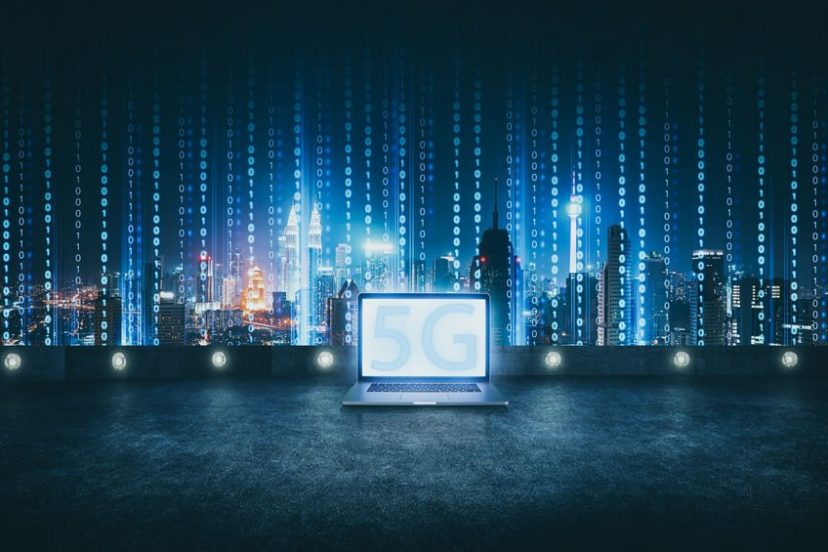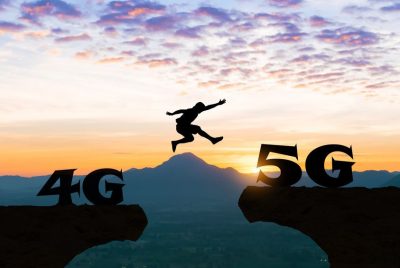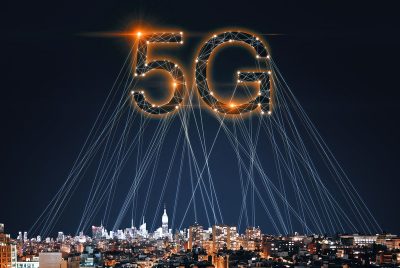We are currently in the early days of what has been called the 5G revolution. This…
What is 5G Technology And How Does It Work?

*We may earn a commission for purchases made using our links. Please see our disclosure to learn more.
By now, you may have some understanding of the risks associated with 5G technology. And it can be pretty scary, especially if you don’t know exactly what 5G is. The term is thrown around a lot, but it can mean different things, depending on the type of 5G you’re talking about. Millimeter waves are different than sub-6GHz, and you must prepare for them differently.
After reading that, you may be wondering what “millimeter waves” and “sub-6GHz” are. The terminology surrounding 5G, as well as the technology itself, can be confusing. If you are concerned about the spread of 5G signals, however, knowledge is key when it comes to effectively safeguarding your home.
How 5G works
In order to protect your home from 5G, it is helpful to have a thorough understanding of how this technology actually works. Knowing about the different types of 5G allows you to better prepare if a tower is going up near your home. It would do you no good, for example, to use EMF protection gear that shields against 10 MHz to 6GHz if you are trying to protect yourself from high band 5G signals. But if you don’t know what frequency high band 5G operates at, you may not know that. Educating yourself about the technology behind 5G better enables you to make decisions that will effectively guard against the right frequencies.
On that note, this guide was created to further your understanding of the technology behind 5G. We’ll even go a bit into the history of 5G, including a timeline of adaptation for a few different countries. Along the way, we’ll discuss what, if any, research has been done on 5G frequencies. Read on to learn more.
How is 5G different from 4G?
One of the first questions you may have is how 5G differs from 4G technology. To answer this, you must know that there are three different forms of 5G — low band, mid band, and high band. We’ll dive into each type in further detail next, but for now, suffice it to say that low and mid bands are not altogether that different from existing 4G technology. They operate at a similar frequency and their signal has a similar range. Note that it’s similar — not exactly the same. This means 4G phones will not work on the 5G network.
From a consumer’s point of view, a phone connected to a low or mid band 5G signal might load pages a fraction of a second quicker, or it might be slightly more responsive than one on a 4G network. This is referred to as latency, and its reduction is one of the primary benefits of all types of 5G signals. The reduction in latency is due mainly to changes in the technology used.
Basically, all phones have a built-in receiver that picks up the signals sent from nearby towers. These receivers are only capable of picking up a given range of frequencies. In 5G-enabled phones, the receiver is a little more advanced. It can pick up different frequencies, as well as multiple frequencies at the same time.
While mid and low band 5G signals differ only slightly from 4G, high band is an exception to the rule. These signals provide a marked improvement in performance over 4G. This type of 5G is significantly faster, in part because of the receiver used, and in part, because very few people are using high band frequencies. The lack of traffic translates to much faster available speeds. High band 5G is unlikely to take off nationwide, however, for reasons we’ll get into in a moment.
Low band
When we say “low band”, we’re really referring to 5G frequencies that fall between 600 and 700 MHz. For comparison, 4G frequencies vary, but many US carriers fall between 700 and 800 MHz. In both cases, these signals are capable of reaching a couple of hundred square miles, so they are pretty efficient at blanketing a wide geographical area. For that reason, low band 5G is likely to be the signal of choice for reaching more rural areas, in particular.
Because 4G and low band 5G are so similar, it’s possible to look at studies of one and draw conclusions about the other. So while 5G really hasn’t been studied, research into the health effects of 4G could tell us more about the consequences of widespread low band 5G usage.
One 2016 study, for example, looked at the health impact of high doses of radiofrequency exposure on human health. The frequencies used were within the range of low band 5G (as well as mid-band). Researchers concluded that spending more than just 50 minutes per day on a cell phone could lead to problems such as early-onset dementia, as well as insomnia, dizziness, memory loss, and hypotension.
When it boils down to it, low band isn’t that different from what’s already out there. The scariest part about low band 5G is really the range of the signal. Places that are currently off-the-grid may no longer be after the widespread adaptation of low band 5G. And since the major US carriers will likely rely on low band 5G as a part of their nationwide coverage strategy, it’s safe to expect a rapid increase in the number of towers out there in the very near future. It’s worth noting that T-Mobile already unveiled its nationwide 5G network using low band 5G technology.
Mid band
Mid band 5G signals don’t have quite the range of low band. They can reach a couple of miles, although they do provide faster speeds and further reduced latency. Mid band signals will be used primarily in cities where the population may not be quite as concentrated as, say, a sports arena, but much less widespread than in the countryside.
By the strictest definition of the term, mid band signals range from 2GHz to 6GHz. In most of the world, mid-band signals range from 3.5 to 3.7GHz. In the US, on the other hand, mid band signals are 2.5GHz. Regardless, all mid band frequencies are sometimes lumped together and referred to as “sub-6GHz” because they all have very similar characteristics.
Mid band 5G is mostly a concern for city dwellers — a concern that may grow stronger in the upcoming months as more carriers jump on board the mid-band trend. Sprint has already turned on its mid band 5G network, with the carrier claiming it covers over 16 million people.
High band
The third form of 5G is high band, sometimes referred to as millimeter waves. High band 5G has the most hype surrounding it, and it is also the least studied for its effects on human health. This form of 5G operates at 24 to 39GHz, much higher than other, more traditional cell signals. As we alluded to earlier, these frequencies are much less frequently used, and they allow for a much faster connection.
High band 5G has some limitations, however, that will probably prevent it from seeing widespread adaptation. That is to say, high band 5G signals can only travel distances of a couple of miles, and any kind of obstruction limits that distance even further. It’s estimated that in a crowded city center, high band 5G signals may travel less than a mile. Most major carriers will probably use high band 5G in places such as sports arenas and other small but densely populated areas.
For that reason, high band 5G does not represent a health risk to everyone. Those living in major cities, however, may want to take steps to determine if there are high band towers near their homes. While high band 5G has not definitively been shown to be harmful, it has also not shown to be harmless. In fact, in one 2018 study insects were exposed to radio frequencies ranging from 2 to 120 GHz. Researchers found that the insects experienced an increase in thermal heating after exposure. Whether these results translate to humans remains to be seen, so for now, the scariest part about this type of signal really is the unknown factor.
If you do find that a tower has gone up near your home, take steps to protect yourself and your family. This can seem easier said than done right now — there are very few, if any, products available on the market that offer protection from high band 5G signals. Even tracking them with a standard EMF meter is extremely difficult, as these frequencies are well outside of a typical meter’s range.
History and future of 5G
While 5G technology has been around for a number of years, it’s only really taken off in the past few. In 2018, South Korea became the first country to offer widespread 5G service. Several other countries followed suit by 2019. That year, in the United States, Sprint and T-Mobile both began offering nationwide 5G. Carriers Verizon and AT&T, on the other hand, focused more on high band 5G, rolling it out in bigger cities across the country.
When 5G was first rolled out, it was anticipated that high band 5G would make up the majority of the signal. The speeds available on these frequencies were initially alluring to the tech industry, but the previously discussed limitations surrounding their range made widespread use impractical. Instead, mid band seems to be the most widely used, as it can deliver faster speeds than low band, but with a much better range than high band. Low band will likely gain popularity as well, as carriers race to increase their coverage area to include more rural communities. AT&T, for example, has plans to expand its low band coverage in addition to focusing on high band.
If the current trend continues, 5G will likely take the place of 4G, just as 4G did to 3G, 3G did to 2G, and so on. One can hope that as 5G pops up in more and more regions, demand for research into its health effects will continue to grow.
There has been little research done to date on the effects of 5G, but, there is some speculation that tests of 5G technology have resulted in mass bird deaths. One such event occurred in 2019 when a man in the United Kingdom filmed birds literally dropping dead out of the sky. No official cause of death was ever provided, but plenty have speculated that the deaths were related to 5G.
Shortly before that, in 2018, a post made the rounds on social media. The posting describes hundreds of Starlings at a park in the Netherlands that were found dead, with some theorizing that the deaths may have been due to 5G tests. However, there is no record of 5G tests taking place on that date and location.
It will remain to be seen if mass bird deaths continue. However, if they are indeed tied to 5G technology, it seems likely that we will see more of them. It’s uncertain what type of 5G tests could lead to these deaths — if it was mid band, low band, high band, or something else entirely. The most likely possibility would be a test of high band 5G technology, as these higher frequencies really have not been tested. If lower frequencies were tied to bird die-offs, we would have seen them before with 4G technology as the signals are so similar.
Final thoughts
You can’t escape the fact that 5G is coming, in some form or another, to your area. The best you can do is prepare, and part of that is understanding what, exactly, you’re up against. Hopefully, after reading this guide, it’s clear why you would not use standard EMF protection gear shielding against 10MHz to 6GHz against high band 5G signals. At 24 to 39GHz, of course, high band 5G signals are well outside of the given range. Standard EMF protection gear would not adequately block high band 5G signals, although it may be useful against mid and low band frequencies.
They say that knowledge is power, and this guide was designed with that in mind. Understanding the technology behind 5G is an important step toward taking charge and protecting your family. 



